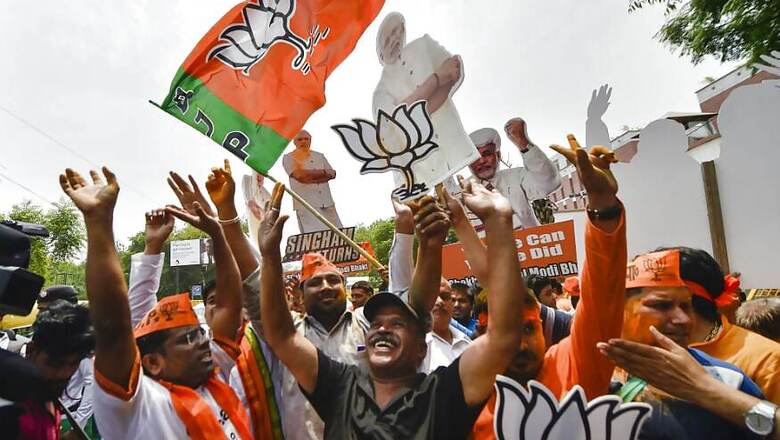
views
New Delhi: Fifteen years ago, when the first elections to the state assembly of newly created Jharkhand were held, the BJP was in opposition at the Centre. Rajnath Singh was the party general secretary in-charge of the state. The elections had thrown up a hung house and the NDA, despite being the single-largest party, was five short of the halfway mark in the Assembly of 81 MLAs.
As Governor Syed Sibte Razi, a Congress appointee, dithered to call the single-largest party to form the government, the BJP decided to organise a protest at the gates of the Raj Bhavan. Rajnath Singh, in spotless white kurta-dhoti, arrived at the stipulated time with the entire entourage of NDA MLAs. Just as the protestors settled down for a long haul, a press release by the governor announced the appointment of JMM leader Shibu Soren as the chief minister of the state. He was asked by the governor to prove majority within a stipulated time.
The tables had turned, and within minutes, the BJP had gathered all its MLAs and driven them to a safe location in Ranchi. Of the 40-plus newly elected Jharkhand legislators ferried out of the state capital in a chartered plane that evening were those who would later be called the ‘famous five’ of Jharkhand politics -- Independents Hari Narayan Rai, Anos Ekka and Madhu Koda, and two MLAs from a hitherto unknown outfit, All Jharkhand Student’s Union (AJSU), led by its MLA from Silli, Sudesh Mahato.
In the floor test two weeks later, Soren failed to prove majority. BJP’s Arjun Munda became the chief minister. The Independents were rewarded with ministerial berths. Of all the new BJP allies, the biggest gainer was AJSU’s Mahato who formed a ginger group within the government and expanded his base. Mahato had become a known name in Jharkhand politics in a very short span of time.
Jharkhand can broadly be divided into three or four geographically distinct regions. Santha Pargana, that is districts bordering West Bengal where JMM has its traditional vote base; Kolhan comprising areas in and around Jamshedpur; and the Chota Nagpur plateau which covers the central part of the state. There is high concentration of Kurmi population in pockets of the plateau. AJSU and its leader Sudesh Mahato derive their strength from this constituency.
Mahato has been consistently with the BJP for almost 15 years now. His party contested the last assembly polls in alliance with the BJP in 2014. The alliance won majority, but Mahato lost from Silli.
Learning its lessons from the recent Maharashtra and Haryana polls, the AJSU has decided to put up candidates in seats where it has a chance of winning even if the constituency has been allocated to alliance partner BJP. Mahato has tried to rope in potential winning candidates who have been denied tickets by other parties.
Like JJP’s Dushyant Chautala in Haryana, Mahato seems to be working on a strategy to increase his tally in the next Assembly. And if the elections throw up a hung House, he would be in a position to bargain for his share of power, irrespective of who forms the government.
The BJP, on the other hand, is a little wary after the Maharashtra experience, having conceded 120 seats to Shiv Sena which is now in talks with NCP and Congress for government formation. Chief Minister Raghubar Das would rather contest on more seats, and depending on the need or shortfall, strike a post-poll alliance.
The reverberations of the Maharashtra and Haryana polls are clearly being felt miles away in Jharkhand which will vote to elect a new government next month.


















Comments
0 comment